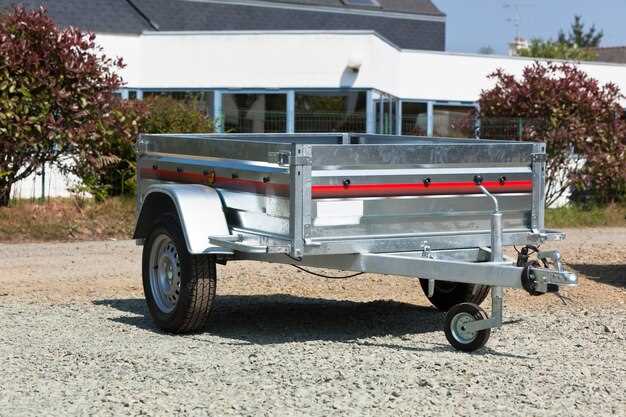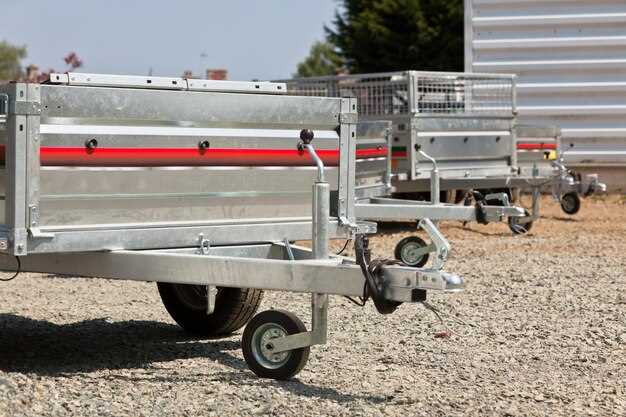
In today’s fast-paced world, individuals and businesses often encounter specific transportation needs that require practical and efficient solutions. One such solution is the rental utility trailer, a versatile tool designed to accommodate a variety of tasks. These trailers serve as an essential extension for those who require extra hauling capacity for both personal and professional use.
Utility trailers are not just for moving large items; they can be adapted for numerous practical applications. From transporting landscaping equipment and furniture to hauling construction materials and outdoor recreational vehicles, a rental utility trailer can meet diverse needs. Understanding the various uses for these trailers can help individuals make informed decisions when it comes to their rental options.
Moreover, by choosing to rent a utility trailer rather than investing in purchasing one, users can save on costs and maintenance. This cost-effectiveness, combined with the flexibility of selecting the right trailer for specific tasks, makes renting a practical choice for many. Whether you are planning a home renovation, a camping trip, or managing a business project, the right utility trailer rental can simplify the process significantly.
Choosing the Right Utility Trailer for Your Project
Selecting the appropriate utility trailer for your project can significantly impact efficiency and ease of transport. When opting for a rental trailer, consider several factors that align with your specific needs.
First, assess the utility you require from the trailer. Identify the type of materials or equipment you plan to transport. For gardening projects, a smaller trailer may suffice, whereas construction or heavy-duty tasks might necessitate a larger, more robust option. Be mindful of both the weight capacity and the dimensions of the trailer to ensure it can accommodate your cargo without exceeding limits.
Next, evaluate the rental duration. If you need a trailer for a short-term task, a basic model may be adequate. However, for extended projects, consider a more versatile trailer that offers additional features such as ramps or tie-down points to secure your load effectively. Flexibility in design can enhance usability across different types of jobs.
Additionally, check the vehicle compatibility with your chosen trailer. Ensure that your vehicle can safely tow the selected model and that you have the necessary hitch and accessories. It’s crucial to review weight distribution to avoid any towing issues, which could lead to safety hazards during transport.
Finally, factor in rental costs and availability in your area. Compare prices and policies from various rental companies to find a competitive rate without compromising on quality and service. Confirm the rental terms, including deposit requirements and insurance options, to avoid unexpected expenses.
By carefully considering these elements, you’ll be well-equipped to choose the right utility trailer that suits your project needs and enhances overall productivity.
How to Load and Secure Items in a Rental Trailer

When utilizing a rental utility trailer, understanding how to effectively load and secure your items is essential. Proper loading ensures the safety of both the cargo and other road users, while securing your load minimizes risks during transit.
Step 1: Assess Your Needs
Before you begin loading, evaluate your specific needs based on the items you are transporting. Consider the size and weight of each piece as well as how they will fit within the trailer. This assessment will guide your loading strategy and help in optimizing space.
Step 2: Distribute Weight Evenly
Begin loading your heavier items first, placing them towards the front of the trailer. This will help maintain proper balance and control while driving. Distribute weight evenly from side to side and front to back to avoid swaying or tipping while en route.
Step 3: Use Proper Loading Techniques
Utilize ramps or dollies for heavy or bulky items to prevent strain or injury. When stacking items, place larger, sturdier boxes on the bottom and lighter items on top. Fill any gaps with smaller, lighter materials to prevent shifting during transport.
Step 4: Secure Your Load
Once the items are loaded, use tie-downs, straps, or bungee cords to secure everything in place. Make sure to fasten these tie-downs to the trailer’s anchor points to prevent them from loosening during transit. Regularly check the tension to ensure items remain stable.
Step 5: Cover and Protect
If transporting items that are vulnerable to weather conditions, consider using tarps or blankets to cover them. Protecting your load not only safeguards your belongings but also keeps the trailer space organized and secure.
By following these steps, you will ensure that your rental utility trailer is loaded safely and effectively, meeting all your transportation needs.
Cost-Benefit Analysis of Renting vs. Owning a Utility Trailer

When considering whether to rent or own a utility trailer, it is essential to evaluate both options in terms of cost and practicality based on individual needs. Each approach offers distinct advantages and disadvantages that can significantly impact your decision-making process.
Initial Costs: Owning a utility trailer requires a substantial upfront investment, including the purchase price and additional expenses such as registration, insurance, and maintenance. Conversely, the rental option typically involves a lower initial cost, allowing you to access a trailer when needed without a long-term financial commitment.
Maintenance and Upkeep: Ownership entails regular maintenance, repairs, and storage requirements, resulting in ongoing costs that can accumulate over time. In contrast, renting a utility trailer shifts responsibility for maintenance and upkeep to the rental company, reducing hassle and unpredictability for the user.
Frequency of Use: Assessing how often you will need a utility trailer is crucial. If your needs are infrequent or seasonal, renting can be a more economical choice, providing flexibility without the burden of ownership. However, for those who frequently require a trailer, owning may offer greater savings in the long run when considering cumulative rental fees.
Variety and Suitability: Rental services often offer a range of trailer types and sizes, enabling you to choose a specific model that meets your unique needs for each project. This variety ensures that you can select the most appropriate utility trailer without the obligation of long-term ownership.
Depreciation Factor: Utility trailers depreciate over time, which is a consideration for ownership. The financial loss associated with depreciation can be significant, while renting eliminates this concern, allowing you to avoid the risks linked to asset depreciation.
In summary, a thorough cost-benefit analysis of renting versus owning a utility trailer should factor in initial costs, maintenance responsibilities, frequency of use, variety of options, and depreciation. By assessing these elements against your specific requirements, you can make an informed decision that aligns with your logistical needs and financial goals.





